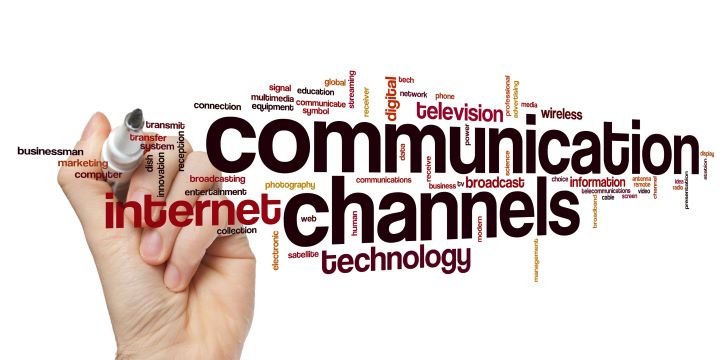Key Takeaways:
- Gaining in-depth knowledge of the Lifeline Program’s objectives and its vital role in supporting low-income households.
- We are exploring the application process and identifying the necessary steps to become a participant in the Lifeline program.
- It is understanding the nuanced benefits of the program and the positive impact it has on communities striving to overcome the digital divide.
Table of Contents:
- Introduction to the Lifeline Program
- Eligibility Requirements for Lifeline Assistance
- Types of Lifeline Assistance Programs Available
- How to Apply for Lifeline Services
- Lifeline Program Benefits and Limitations
- The Impact of Lifeline on Families and Communities
- Lifeline and Technology: Bridging the Digital Divide
- Frequently Asked Questions about the Lifeline Program
- Next Steps after Lifeline Enrollment
Introduction to the Lifeline Program
Effective communication is crucial for equal opportunities in the 21st century. Programs like Lifeline are essential for social and economic inclusion. Established by the U.S. government, the Lifeline program plays a crucial role in disbanding communication barriers by offering discounted telecommunication services to eligible households.
The Lifeline initiative helps to promote digital literacy and inclusion by providing subsidies on monthly phone or internet bills, culminating in empowered citizens who can leverage these tools for their advancement. As such, the program does more than grant financial support; it fosters a lifeline to the digital world, enabling citizens to reach out far beyond their immediate surroundings.
Eligibility Requirements for Lifeline Assistance
Connectivity is an essential service analogous to utilities such as electricity and water. It is especially critical for a household’s collective well-being. Access to a reliable cell phone in MD is no longer a luxury but a necessity for staying connected with work, school, and healthcare services and staying informed during emergencies. To ensure that the assistance reaches those who need it most, the Lifeline program incorporates clear-cut eligibility criteria rooted in federal poverty guidelines or participation in other government assistance programs. A household becomes eligible for Lifeline if a member is a beneficiary of federal aid such as Medicaid, Supplemental Nutrition Assistance Program (SNAP), or Supplemental Security Income (SSI) or if their income stands at or below 135% of the federal poverty guidelines. When applying for the program, applicants need to provide definitive proof of eligibility, which can include tax returns, three consecutive pay stubs, or benefit award letters, thereby ensuring that the support is targeted and effective.
Types of Lifeline Assistance Programs Available
Diversity in need calls for diversity in aid, and the Lifeline program meets this with a variety of offerings designed to match the unique circumstances of individuals across the nation. While each state has leeway in administering the program, common variants include discounts on either voice or broadband services or even bundled services in some instances. It ensures that support is tailored, with beneficiaries able to select services that align most closely with their communication needs, whether it be connectivity for a job search or maintaining significant familial ties.
How to Apply for Lifeline Services
The road to accessing Lifeline’s benefits begins with a simple yet structured application process. Potential beneficiaries must start by locating a Lifeline service provider in their area, followed by completing an application form that asks for personal identification, address, and eligible program participation proof. The goal is to verify the applicant’s need for assistance. It’s paramount for applicants to fill out the form honestly and thoroughly to ensure a smooth review process. The completion and subsequent approval of an application mark the beginning of reduced communication expenses and a gateway to better connectivity.
Lifeline Program Benefits and Limitations
The primary benefit subscribers receive through the Lifeline program is a reduction in their monthly phone or internet bill, which can make a significant difference in a household’s financial flexibility. This saving can translate into improved Access to education, job opportunities, and a host of other benefits that come with being connected. However, there are significant limitations to recognize, such as the stipulation that only one discount is available per household and that beneficiaries are required to confirm their continued eligibility each year. It’s also crucial to know that the program does not offer free services but rather a discount to make them more affordable.
The Impact of Lifeline on Families and Communities
The value of the Lifeline program extends well beyond individual subscribers, fostering far-reaching effects that bolster entire communities. Research conducted by organizations such as the Federal Communications Commission (FCC) has consistently shown the social and economic benefits that flow from improved Access to communication services. Success stories typically include how Lifeline has facilitated job searches resulting in employment, provided consistent communication for remote learning for students, and enhanced emergency response capabilities during crises. The FCC’s study on Lifeline reflects on how important the program has been in terms of community enrichment and its crucial role in providing low-income families with the springboard needed to elevate their socioeconomic status progressively.
Lifeline and Technology: Bridging the Digital Divide
As we progress further into the digital age, the chasm known as the digital divide becomes increasingly difficult to bridge. However, initiatives like Lifeline play an instrumental role in making technology accessible to marginalized communities, subsequently ensuring fair participation in the digital economy. By fittingly providing access to modern communication tools, Lifeline helps prevent people from being left behind, thus promoting digital literacy and inclusion. In this context, smartphones and broadband internet access have become indispensable in granting individuals the ability not only to receive information but also to contribute actively to the digital world.
Frequently Asked Questions about the Lifeline Program
Queries about the Lifeline program are abundant, with potential subscribers often asking about the reach of services, the depth of discounts, and the subtleties involved in maintaining eligibility. Responding to these inquiries with precise and easy-to-understand answers is crucial in ensuring that the information is accessible to all, thereby allowing for a broader understanding and uptake of the Lifeline program’s benefits. Simplifying complex government processes into manageable information goes a long way in helping eligible individuals make informed decisions about their telecommunication needs.
Next Steps after Lifeline Enrollment
Enrollment in the Lifeline program is just the beginning of a journey toward increased connectivity and participation in the digital world. Subscribers must stay informed about maintaining their eligibility, including the yearly recertification required to continue receiving benefits. Approaching the Lifeline program as a foundation, beneficiaries are encouraged to further their understanding of modern communication technology, its significance in daily life, and how it can be used to advance career and educational opportunities. Engaging with internet resources and technology can aid in lifelong learning and adaptation to the digital landscape.




